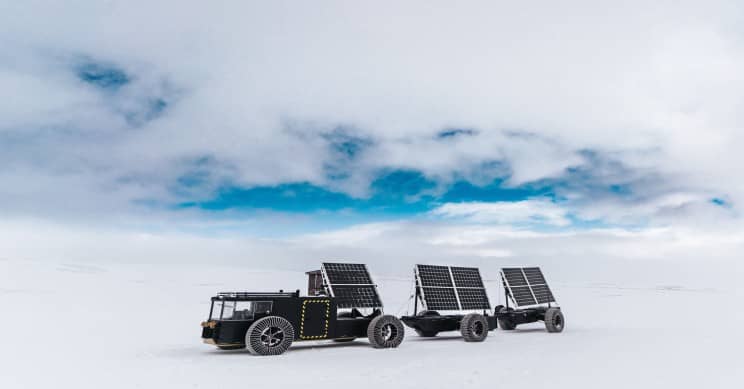As the awareness of climate change and depleting resources have reached people, many are now advocating for a zero-waste lifestyle or to at least adopt some part of it in our lives. A similar effort is put by a Dutch couple, Edwin and Liesbeth ter Velde, who work for the environmental organization Clean2Antarctica and will go for an expedition by the end of this month. The vehicle carrying out the project is named Solar Voyager. The Solar Voyager is a solar-powered vehicle which is made of upcycled plastic parts that were 3D-printed.
The vehicle has the following specifications:
It is a two-seater vehicle which has two trailers behind that will move together on eight netted tires. There are a total of 10 bifacial solar panels which will be present on the top of the containers, and each one will weigh around 25kg and measure 1.8m^2. The vehicle is also equipped with solar vacuum tubes which will help to melt the snow and used as infrared windows. There are specially designed HexCores that will serve as the building blocks of the vehicle.
The couple is expecting for the trip to last for 30 days. It will begin from their base camp in Antarctica and end at the South pole. They have been testing out their clothing and the cameras which will be used to document their whole journey. They sat inside a freezing unit where the temperature fell below -20 degrees C while being observed by the thermo-physiologist professor Hein Daanen. He said, “They could sit here for hours.”
Edo Landwehr, who will film the expedition, said that the smaller cameras performed well. However, the larger ones need some tweaking done. He said, “One of the bigger cameras we took into the freezer started acting weird after only 15 minutes. The screen where you can see what you’re filming began to flicker and sometimes turned off completely.” The team expressed their mission behind the project by saying, “If driving to the South Pole on solar power was our ultimate goal, we would still be proud of our mission because no one has ever done it before and the technology we developed can become a prototype for Antarctic research drones. However, it’s not about technology but about starting experiments and discovering what’s possible with waste. To reach a circular society, we need to start doing things differently. Our expedition is an example of how far you can get when you simply start doing things differently instead of talking about abstract solutions.”

